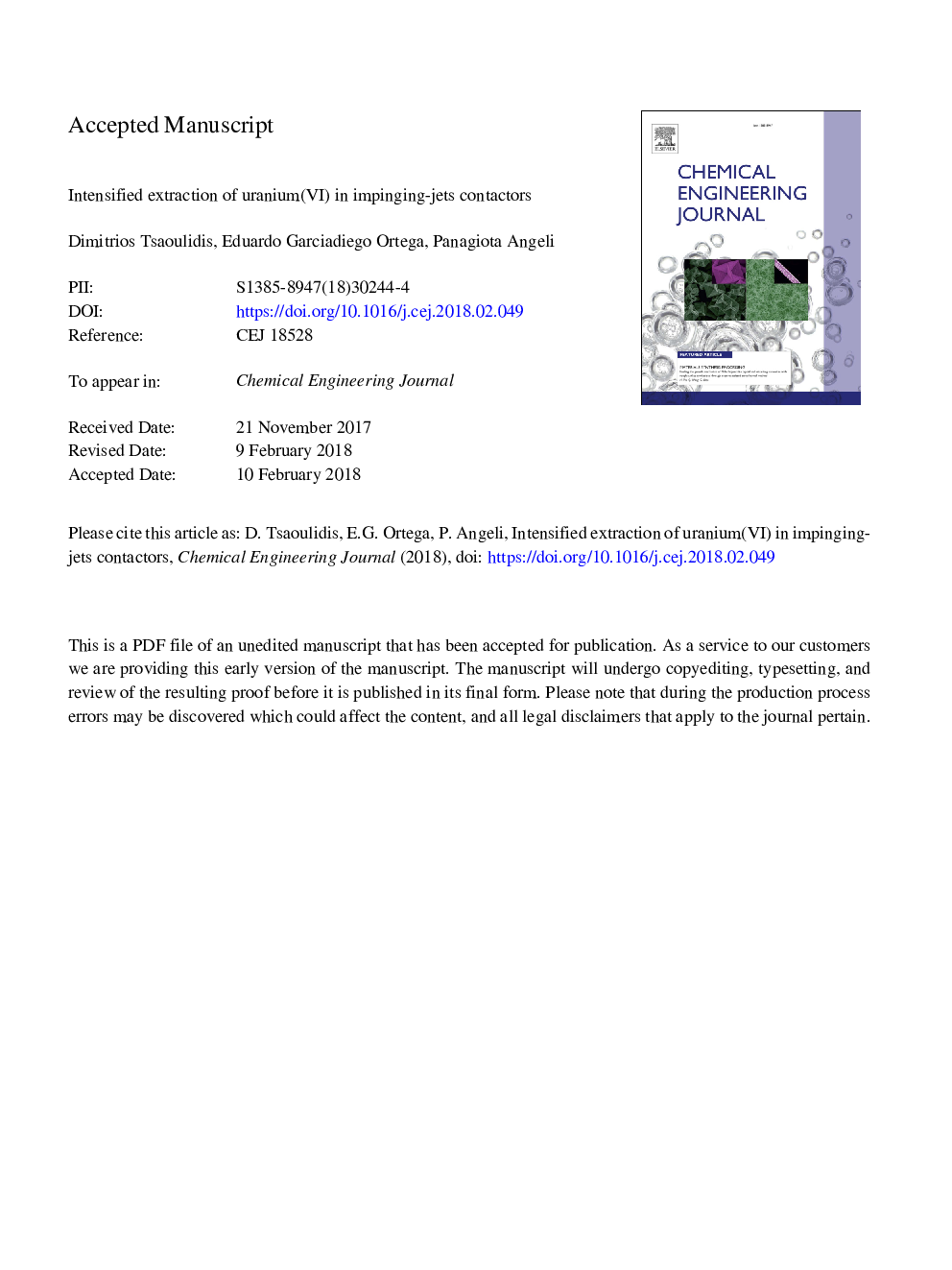| Article ID | Journal | Published Year | Pages | File Type |
|---|---|---|---|---|
| 6579850 | Chemical Engineering Journal | 2018 | 29 Pages |
Abstract
The mass transfer performance of confined impinging-jets (CIJs) contactors was investigated for metal separations. In particular, the extraction of uranium(VI) from aqueous nitric acid solutions (3â¯M) into 30% v/v TBP/Exxsol D80, relevant to spent nuclear fuel reprocessing, was studied for different cell geometries, i.e. main chamber size (Dâ¯=â¯2 and 3.2â¯mm) and jet diameter (djâ¯=â¯0.25 and 0.5â¯mm), and different operating conditions, i.e. residence time (Ïâ¯=â¯1-9â¯s), total jet velocity (utotâ¯=â¯2.6-8.6â¯m/s), and reactor length (Lâ¯=â¯7-85â¯cm). For all conditions investigated, the aqueous phase was the dispersed one. Drop sizes were also measured with high-speed imaging. It was found that the extraction efficiency increased by increasing residence time for a constant total jet velocity regardless of the chamber size. At a constant residence time, higher extraction efficiency was achieved at high total jet velocities, which are associated with larger interfacial areas (smaller drops). The extraction efficiency reached 70% in most of the cases investigated in less than 2â¯s. In addition, high overall volumetric mass transfer coefficients (up to 1â¯sâ1) were obtained at short residence times. Using regression analysis, a correlation for the overall volumetric mass transfer coefficient was developed from the experimental data with an average deviation of 9%.
Related Topics
Physical Sciences and Engineering
Chemical Engineering
Chemical Engineering (General)
Authors
Dimitrios Tsaoulidis, Eduardo Garciadiego Ortega, Panagiota Angeli,
